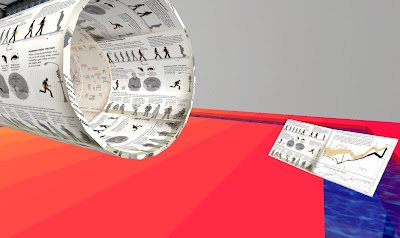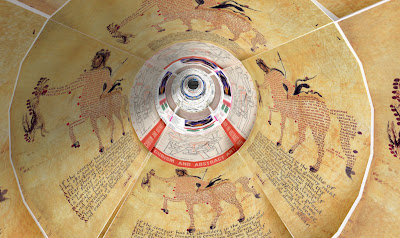IML Island now has a holodeck and I purchased the classic Star Trek Shell $L500 to make it all the more obvious. However, people need to be able to make original environments for it and the following is my first attempt.
Step 1: Genesis - start out on the holodeck with only a shell.
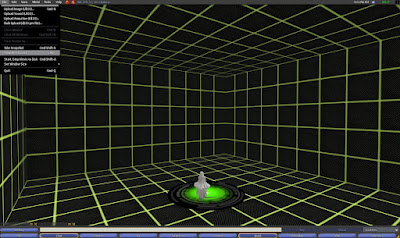
Step 2: Touch the Rezzer and select - Build - Inner Shell.
This is a generic environment with set dimensions that can be modified.
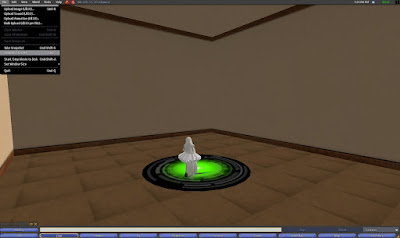
Step 3: Edit Textures.
Here I used one of my previous uploaded textures and added it to the walls. All of the wall prims are linked so all of them were changed at once.
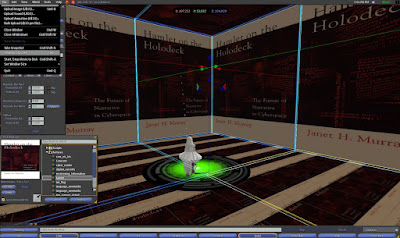
Step 4: Decorate Scene
Add objects and animations to your scene. Right now I am just placing a few Library items, but much more complicated environments can be created.
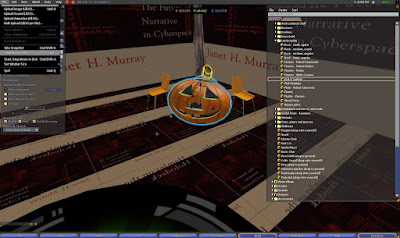
Step 5: Drag and Drop 'AVRS Positioner' script -
Onto every object in the scene. A message will show up saying 'position saved'. This tells the Rezzer where to put each object upon loading. I was not able to add a script to the tree and will need to find a solution.

Step 6: Take Objects into Inventory
Once you have applied the AVRS script. Make sure to keep your objects organized as many will have the same name. I created a new folder called 'Hamlet' and dragged each item into it once it was taken back into my Inventory.

Step 7: Build a Crate
Touch the Rezzer and select Build - New Crate. The box below will appear.
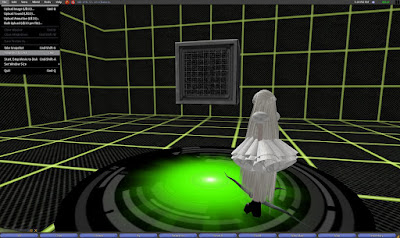
Step 8: Load Crate
Right click the Crate and select Edit. Select the Content Tab. Drag the objects for you scene into the Contents Folder. It will take a moment, but one by one they will appears.
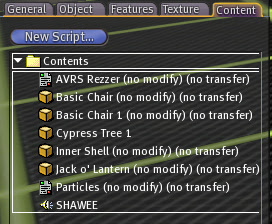
Step 9: Take Crate - Give to Rezzer
Take the loaded crate into your inventory. Now drag it onto the Rezzer. The Rezzer will light up and Reset. Your new scene is almost ready.

Step 10: New Scene added
Touch the Rezzer and Select Scenes - and poof! your new scene (Hamlet) should be added to the list available environments. Tying in the chat window 'list programs' will display it in the available programs as well.
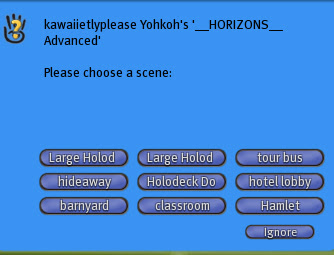
Step 11: Load New Scene
New scene is displayed. Only problem is that tree, but a simple move can fix that for now.

 There are many different ways to navigate spaces in SL from walking to flying to teleporting and with all of these large spaces sometimes it can get overwhelming and disorientating. Some people like to use maps, but I personally do not want to have an extra window open as I find the SL interface cramped as it is, so I (described in an earlier post) put all of the text/ures on the IML region facing one direction. Unfortunately this led to issues when trying to fly quickly across the campus as most can't read and fly very well. What I wanted was the SPACE itself to communicate to the user WHERE they were located. All of the regions in SL have coordinates Zero to 255 for coordinates X, Y, Z.. just like the color code Zero to 255 for R,G,B...SO... I jumped into the Linden Scripting Language to write my first piece of code and so far it seems to have worked very well. It takes the objects coordinates and translates it into RGB code and now you can say oh I must be near the gallery space because it's yellow...... bzzzrp
There are many different ways to navigate spaces in SL from walking to flying to teleporting and with all of these large spaces sometimes it can get overwhelming and disorientating. Some people like to use maps, but I personally do not want to have an extra window open as I find the SL interface cramped as it is, so I (described in an earlier post) put all of the text/ures on the IML region facing one direction. Unfortunately this led to issues when trying to fly quickly across the campus as most can't read and fly very well. What I wanted was the SPACE itself to communicate to the user WHERE they were located. All of the regions in SL have coordinates Zero to 255 for coordinates X, Y, Z.. just like the color code Zero to 255 for R,G,B...SO... I jumped into the Linden Scripting Language to write my first piece of code and so far it seems to have worked very well. It takes the objects coordinates and translates it into RGB code and now you can say oh I must be near the gallery space because it's yellow...... bzzzrp
